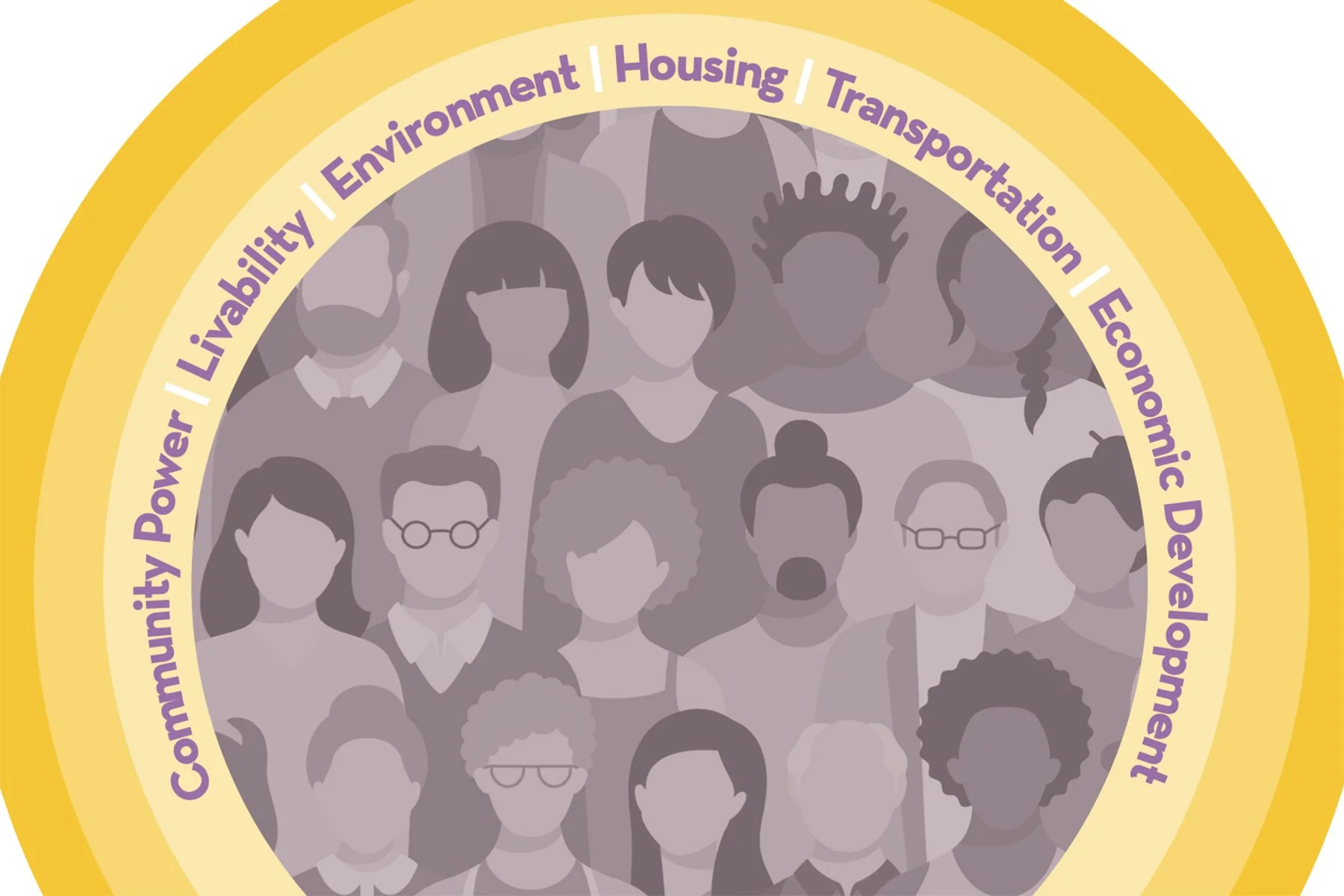The Alliance Updates Its Equitable Development Principles & Scorecard
By Chris Hudson | August 11, 2022
A detail of an Equitable Development Principles & Scorecard graphic listing the six themes.
SPOTLIGHT
In late July, the Alliance, a coalition of community organizations and advocacy groups advancing equity in the Twin Cities region, released an update to its Equitable Development Principles & Scorecard. The coalition and its collaborators created the flexible tool in 2016 to aid community groups, government agencies, and planners in engaging stakeholders, assessing proposed projects, and making policy recommendations, among other applications.
The original Scorecard organized equitable development into five areas: community engagement, transportation, housing, land use, and economic development. Last year, it added a sixth: livability.
“We felt like there needed to be a principle that talked about the intangibles of development,” says Joo Hee Pomplun, the Alliance’s executive director. “Even if you have an affordable housing development with access to jobs by transit, you can still have a hostile environment where people won’t thrive. So, we added the livability principle to lift up the pieces around community history, wellness, and power. We also changed community engagement to community power.
“Community wellness is such an important aspect of development,” they continue. “There’s lots of data that says the environment has a greater impact on one’s health than genetics or healthcare itself.”
This past year, the Alliance made additional updates designed to allow the tool to serve an even wider audience. “We enhanced the introduction, for example, to highlight the purpose to the Scorecard in a stronger way,” says Pomplun. “Originally, the introduction was mostly geared to people who were taking up the Scorecard to do equitable development. But the reality is, a lot of people use the framework as a learning tool to help start conversations about equitable development. So, we wanted to give more foreground on the principles for people who are using the tool for learning.”
For more on the Equitable Development Principles & Scorecard, including a case study on how the West Side Community Organization in St. Paul used the Scorecard as a framework for neighborhood visioning and planning, visit the tool’s landing page.

